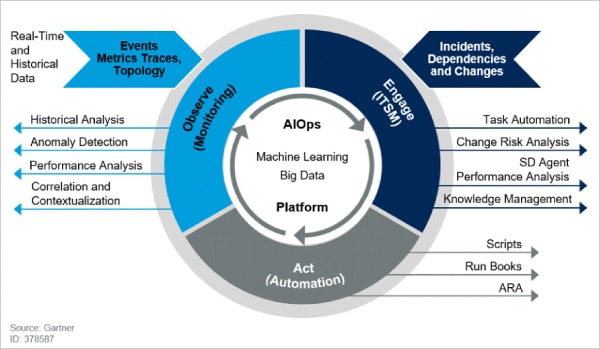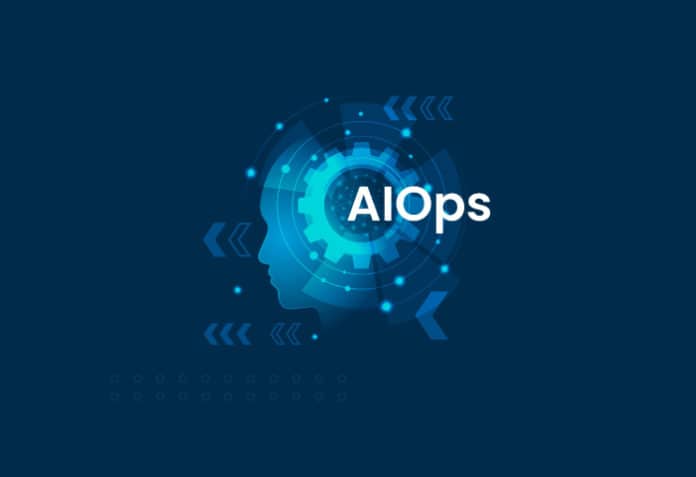Businesses, no matter how small or large, must transform themselves into digital firms as technology advances. It is no longer a question of ‘choosing’ to transform; rather, it is about ‘how’ to move forward with the transition. This is where AIOps comes in.
there are a lot of challenges that come with transforming an organisation into a digital firm. Lack of dedicated IT skills, organisational change management, evolving customer needs, and hybrid environments are just a few of these. Businesses need to enhance their IT operations (ITOps) to meet these challenges and fulfill customer expectations.
Digital transformation: The way to AIOps
In the future, ITOps will combine algorithmic and human intelligence to make the performance of IT systems transparent and help them deliver a seamless experience.
“The long-term impact of AIOps on IT operations will be transformative.” – Gartner
AIOps will be essential for successful digital transformation to help systems perform at the velocity that modern business demands. This, in turn, will establish how quickly a company acquires and retains market leadership.
Modern AIOps technologies offer IT infrastructure on-premises, on the cloud, or in a hybrid environment. Their automation allows developers to focus on designing next-generation business apps rather than be concerned about the underlying infrastructure.
What is AIOps?
AIOps combines artificial intelligence and machine learning to analyse data for IT operations. It is the process of applying AI to IT operations. It helps organisations detect errors proactively and also helps operations teams prevent issues before they impact end users.
Traditional IT management techniques have been unable to handle digital business transformation. When Gartner coined the term AIOps, the company predicted that there would be significant changes in the process of IT operations as well as a massive change in how organisations manage their IT ecosystem.
AIOps platforms use Big Data. They collect the data from various IT operations and devices to automatically identify and respond to problems in real-time while still delivering traditional historical analytics. AIOps then executes comprehensive analytics using machine learning for the combined IT data.
Automation-driven insights that lead to continuous improvements and repairs are the outcome. Continuous integration and deployment (CI/CD) for essential IT functions is supported in AIOps.
What is the scope for AIOps?
Getting started with AIOps may seem challenging initially, so it is best to take a step-by-step approach. We need to begin by identifying and understanding IT operational data. AIOps is data-driven at its core. Therefore, it needs access to all relevant operations data, including unstructured data, logs, metrics, real-time data, API outputs, and device data. Structured business data is also needed, such as databases, social activities, and other relational data. The more relevant data AIOps platforms consume, the more accurate their predictions will be.
Businesses need to understand how their data can help solve their biggest problems no matter which industry they are in. They should implement AIOps to review their past failures and identify what data will help them arrive at a solution.
Data analytics can be used to find the source of outages or system slowdowns. Then the AIOps platform can be used for detecting common issues and their remedies. Businesses can use the collected insight to implement machine learning and AI for real-time monitoring and automated response. This entire process helps companies drive AI maturity, effectively fixing errors, avoiding downtime, and enhancing efficiency.

Why is AIOps needed in 2022?
As businesses hasten their digital transformation, applications and system architectures become highly advanced. We can witness this complexity in a few ways:
- Organisations are transferring from traditional application architecture to a cloud-native, flexible, and microservices based containerised application stack.
- These applications are also being deployed on on-premises, hybrid, public, and private cloud platforms.
As applications and IT environments expand, they produce tremendous amounts of data. IT operations teams get exhausted with data they cannot manage. However, AI can consume massive amounts of data. As the volume of data expands, the opportunities for AI to be incorporated into IT processes are much greater.
Anomaly detection, categorisation, and prediction can all be done by using machine learning and deep learning models, which excel at analysing massive volumes of data and delivering insights. Many features of AIOps help firms provide a good user experience through an interactive dashboard.
Businesses implementing AIOps have reported benefits such as frictionless experiences, lower operating expenses, faster customer service, shorter mean time to resolution, and fewer downtimes. AIOps supports IT operations by taking firm decisions based on predictive analytics.
A final note
AIOps is the next step in IT operations analytics (ITOA). AI, cognitive skills, and RPA (robotic process automation) are used to automate the remediation of infrastructure or IT operations’ issues before they become a problem. Self-healing systems are the ultimate goal of AIOps.













































































